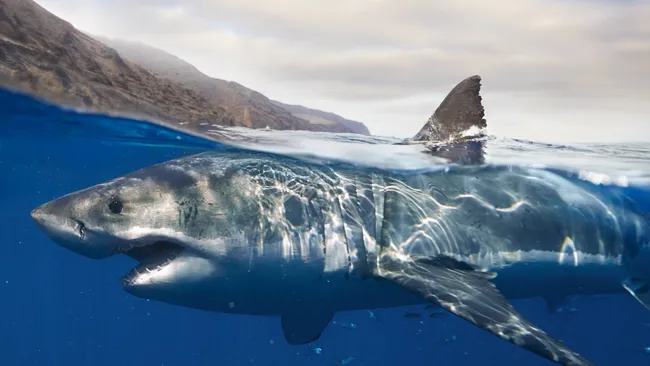Scientists found three distinct great-white-shark populations that congregate in different oceans and do not interbreed. Their separation may have implications for conservation.
A recent study reveals that great white sharks split into three distinct groups between 100,000 and 200,000 years ago, and these groups rarely intermix. The findings suggest that if one of these populations were to go extinct, it would not be replaced by individuals from another lineage, according to the study authors.
Published on July 23 in Current Biology, the study involved sequencing the genomes of 89 great white sharks (Carcharodon carcharias) from around the globe. The results identified three separate populations that evolved independently and did not interbreed. These populations are found in the North Atlantic/Mediterranean, Indo-Pacific, and North Pacific oceans.
“Now we understand that if sharks are wiped out in one area, they won’t be repopulated by sharks from a different lineage,” explained Leslie Noble, a molecular evolutionary ecologist at Nord University in Norway and a co-author of the study. “The so-called global population of white sharks has now fragmented into these three distinct units, which is quite concerning.”
Similar to salmon, female great white sharks always return to their birthplace to give birth, which means their mitochondrial DNA—passed down maternally—acts like a genetic “passport,” revealing their origin. Previous studies have utilized mitochondrial DNA to explore genetic diversity, but because this DNA can mutate, it wasn’t always reliable for tracing lineage divergence.
In this study, Noble and her team analyzed hundreds of thousands of genetic markers at the single nucleotide level to better understand the genetic variations in white sharks. By examining the complete genomes of the 89 sampled sharks and applying statistical algorithms to group related sequences, the researchers identified three distinct populations.
The study traced the evolutionary history of these sharks, finding that the genetic divergence occurred around 100,000 to 200,000 years ago during the Penultimate Glaciation Period, when sea levels were up to 150 meters lower than today. The reason for this separation remains unclear, but Noble hypothesizes that falling sea levels and changes in ocean currents and temperatures may have created barriers that led to the divergence of these shark populations. “We don’t see genes crossing these geographical boundaries,” Noble noted. “This suggests some form of selection is driving adaptation to the specific environments.”
Interestingly, the only evidence of interbreeding was found in a hybrid shark—a blend of the Indo-Pacific and North Pacific lineages—discovered in the Bermuda Triangle. Noble speculates that there might have been other instances of interbreeding, but the hybrid offspring could have been lost through natural selection. The International Union for Conservation of Nature (IUCN) classifies the great white shark as vulnerable, with their population decreasing by about a third from 1970 to 2018. However, global conservation efforts have helped their numbers slowly increase.
Noble believes that conserving each of these three lineages is crucial. If one population starts to overlap with another’s territory, interbreeding could occur, potentially producing offspring that might not survive. The loss of these apex predators would also impact human life significantly. “Our fate is closely tied to great whites because we rely on marine ecosystems for about 20% of our protein, which these sharks help keep healthy,” Noble said. “If we lose great whites, we could lose a substantial source of our protein.”
